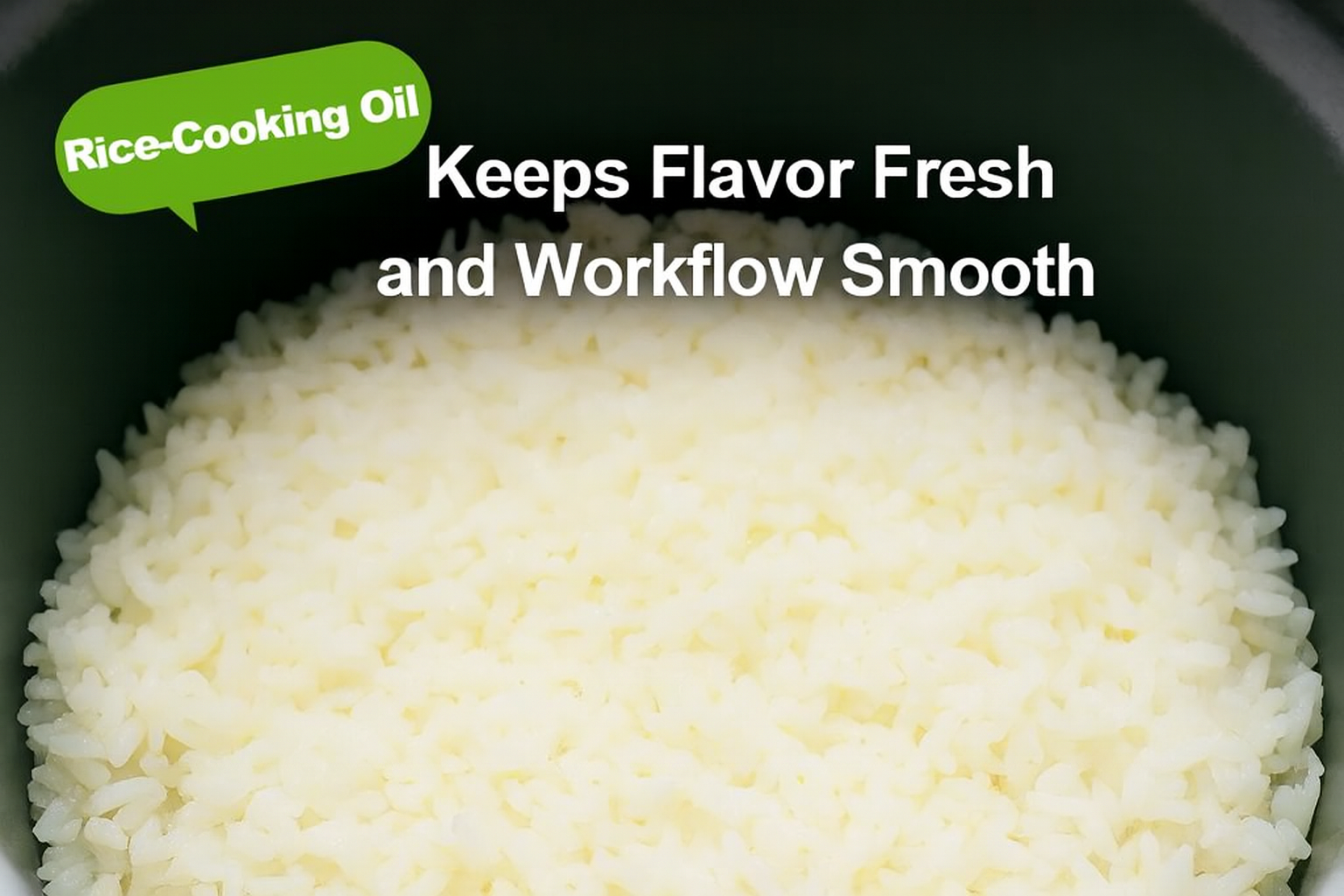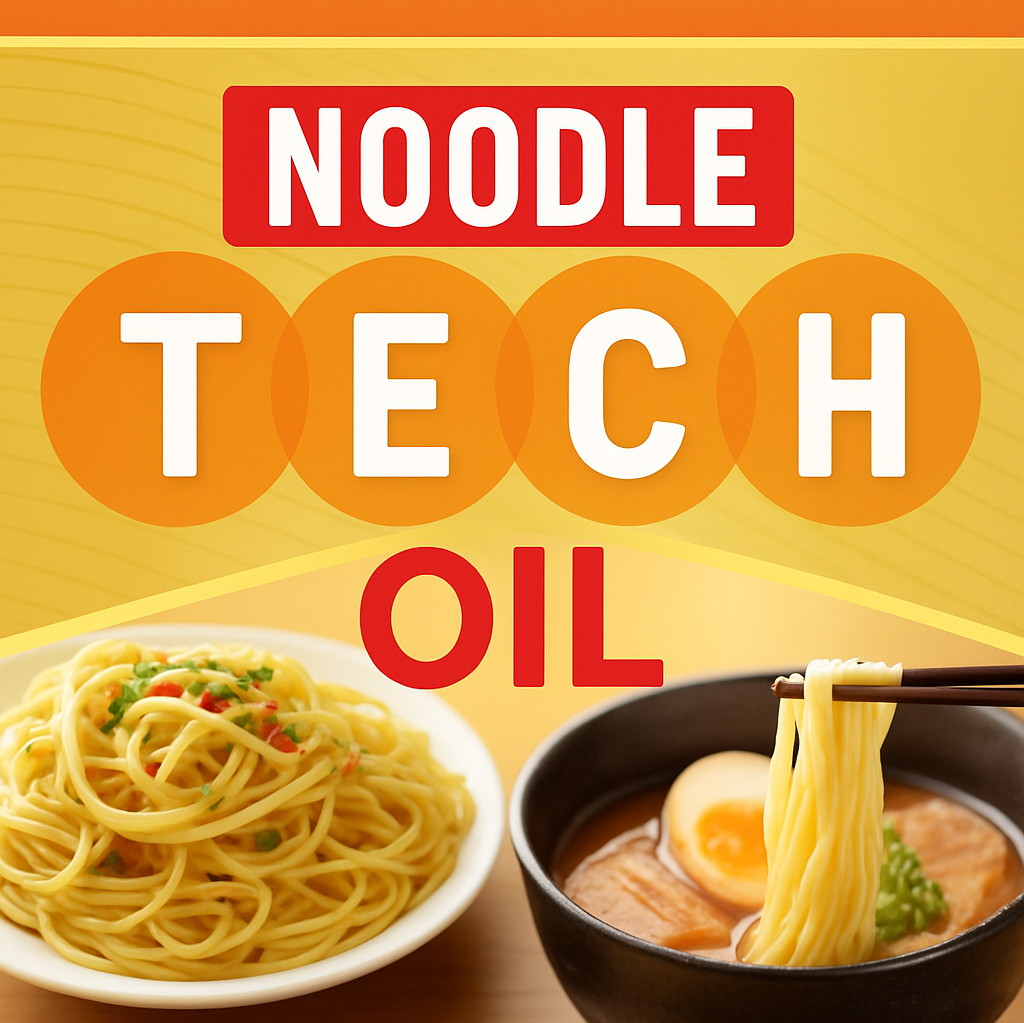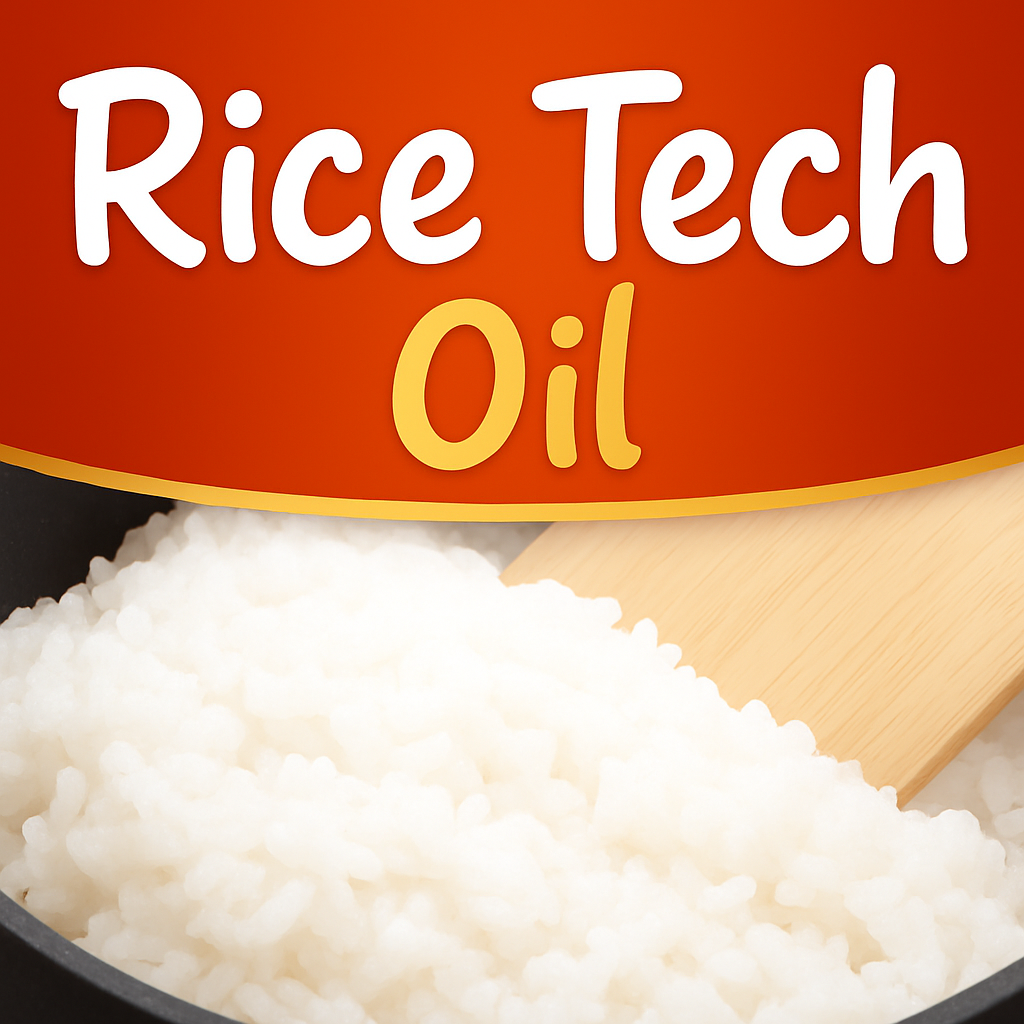For many restaurants, serving high-quality rice is an essential part of customer satisfaction. In an ideal world, we would want to serve freshly cooked rice at all times; but in practice, frequent small-batch cooking is not realistic from an efficiency standpoint.
One effective solution to this challenge is the use of rice cooking oil.
In this article, we will discuss the benefits of rice cooking oil, key points to consider when choosing the right oil, and practical tips for its use that can help streamline operations at your restaurant.
Contents
Types of Oils Used When Cooking Rice
The following types of cooking oil are sometimes added when cooking rice:
・Rice bran oil: A plant-based oil extracted from rice bran known for its rich flavor.・Vegetable oil: A mild, plant-based oil that is versatile, easy to use, and can be consumed raw.
Adding oil during cooking can enhance flavor and improve texture by preventing clumping. However, conventional oils tend to disperse unevenly, often requiring larger quantities in order to coat rice evenly and achieve noticeable results.
For consistent results with less oil, it is advisable to use specialized rice cooking oil. These products are designed to prevent drying, make serving easier, and deliver more effective results.
Benefits of Using Rice Cooking Oil
The use of rice-cooking oil offers several advantages:
Delays Starch Retrogradation
Freshly cooked rice has a distinct aroma and appealing taste. Over time, however, moisture escapes, texture deteriorates, and discoloration may occur. These processes are collectively referred to as retrogradation.
Rice-cooking oil coats each grain, helping to retain internal moisture and slowing retrogradation. As a result, rice maintains its desirable texture and flavor for longer compared to rice cooked without oil.
(For a detailed explanation of why rice loses its flavor over time and how to prevent this from happening, please see:Preventing Dry Rice: Tips for Keeping It Soft and Flavorful)
Prevents Sticking
Rice cooking oil also helps prevent sticking. Cooked rice is less likely to stick to pots, rice cookers, or utensils, and the grains themselves don’t clump together as easily.
This feature is particularly valuable during busy periods such as lunchtime, when handling large volumes of rice can place significant demands on staff. Easier serving not only reduces workload but also improves efficiency.
Additionally, less rice sticking to the pot means increased yield, reducing food waste and contributing to both economic and environmental sustainability.
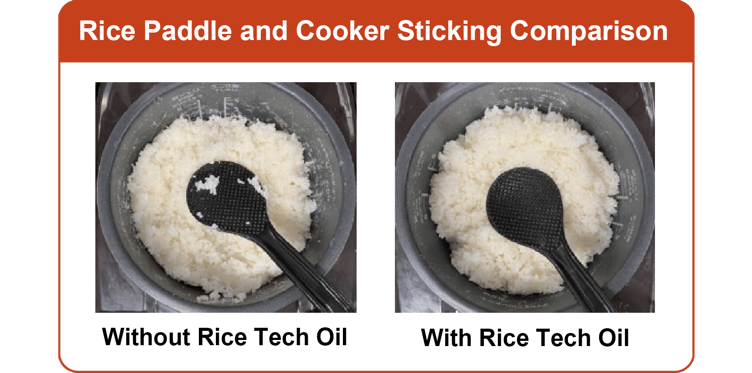
Key Points When Selecting Rice Cooking Oil
When choosing a rice cooking oil, consider the following factors:
Texture and Finish
Rice cooking oil prevents drying by coating each grain, though results vary by product and over time. Some products yield softer rice, while others produce a firmer, more distinct grain structure. Be sure to evaluate the texture of rice both immediately after cooking and after storage.
For firmer, well-separated grains, we recommend Rice Tech Oil.
Quality After Refrigeration
Certain rice-cooking oils also help prevent rice from becoming too firm during refrigeration. If reheating refrigerated rice is part of your operations, be sure to check how each product performs under those conditions.
Ease of Serving
When rice separates more easily, utensils such as paddles move smoothly through it, improving efficiency. Less rice sticking to pots and containers also allows for faster, cleaner plating.
Operational Efficiency
Rice cooking oils are typically added in proportion to the amount of uncooked rice. If measuring the oil each time takes too long, this negatively impacts efficiency. Be sure to look for products that are designed for easy, precise dispensing so you can cut back on time and effort spent on measuring.
Package Size
Unlike frying oils, rice-cooking oil is used in small amounts at a time. Larger containers may be impractical if not consumed quickly. Make sure to select a size appropriate for the amount of rice your establishment consumes in order to cut back on waste.
If you are unsure which to choose, Rice Tech Oil, comes highly recommended by industry professionals. Free samples are available upon request.
How and When to Use Rice-Cooking Oil
How to Use Rice Cooking Oil
Using rice cooking oil is straightforward. The general process is as follows:
|
Simply add the appropriate amount of rice cooking oil to the rice and water in the rice cooker before cooking. You may choose to mix the oil, rice and water together for even better results.
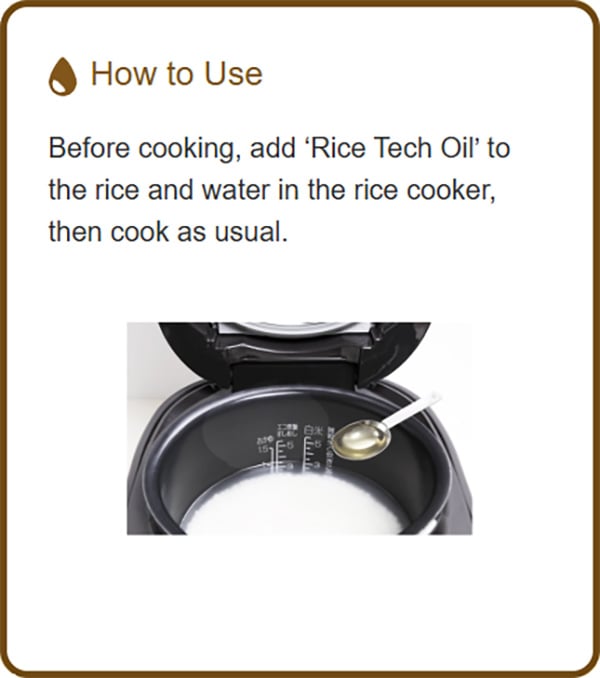
Instructions
Add Rice Tech Oil to the rice and water in the rice cooker immediately before cooking. Cook rice as usual.
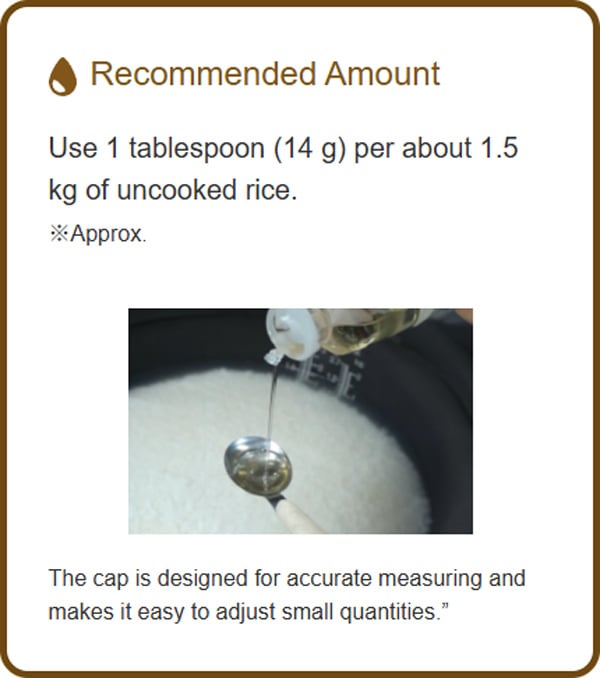
Amount Needed
Roughly 1 Tablespoon (14 g) for approximately 1.5 kg of uncooked rice. It features an easy-to-pour cap which makes measuring small amounts simple and easy.
The amount of oil you need to use varies by product. For Rice Tech Oil:
5 cups (about 750 g of uncooked rice): 4–8 g10 cups (about 1.5 kg of uncooked rice): 8–15 g |
There is no need to make any adjustments to your usual cooking times or heat settings as the oil naturally coats the grains during cooking.
When to Use Rice Cooking Oil
The benefits of rice cooking oil, such as delaying retrogradation and reducing sticking, are particularly useful in the following scenarios:
Busy meal service
Rice separates more easily, shortening plating time during high-demand periods such as lunch. Less drying likewise allows you to cook larger batches in advance without reduced quality.
Onigiri and sushi preparation
Rice cooking oil prevents rice from sticking to trays and utensils, minimizing stress during preparation while also cutting down on food waste. Rice retains its moisture, allowing for preparation in advance without loss of flavor.
Enhancing certain menu items (improving texture)
For dishes such as rice bowls where the grains should maintain a distinct, separate texture, Rice Tech Oil is ideal.
Storing leftover rice
Refrigeration may become necessary when you have rice leftover at closing. Some kinds of oils help prevent excessive hardening during storage, maintaining a soft, slightly sticky texture after reheating. Knowing you can serve leftover rice without sacrificing flavor allows for cooking in larger batches when necessary.
| Note: Rice cooking oil does not possess antibacterial properties. Please observe proper food safety practices when storing rice. |
Improve Your Restaurant’s Operations with Rice Cooking Oil
Rice cooking oil is a practical tool for maintaining the quality, appearance, and texture of rice, enabling restaurants to consistently serve rice at its best. By selecting the right product, you can achieve both culinary and operational benefits.
Rice Tech Oil is specifically formulated for foodservice use, offering excellent grain separation and improved ease of use. It comes in conveniently-sized packaging designed for easy dispensing even in small amounts
Request a sample and discover the benefits of rice-cooking oil for yourself.
[Request a Sample Here]

